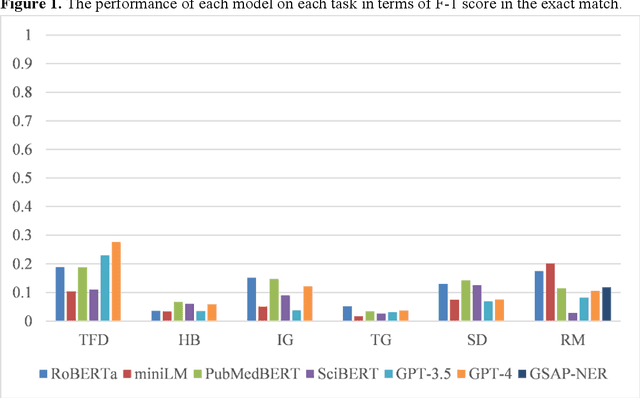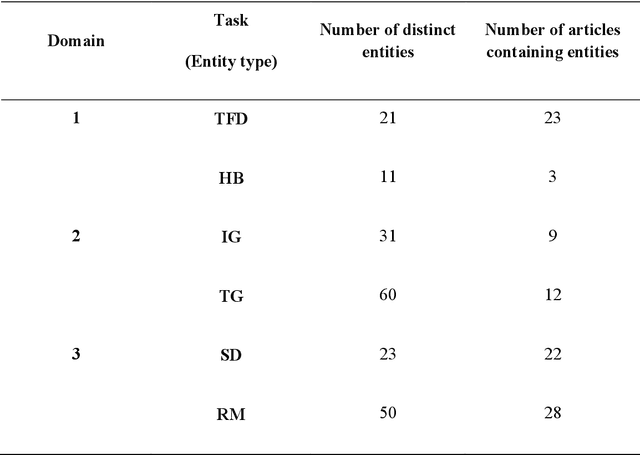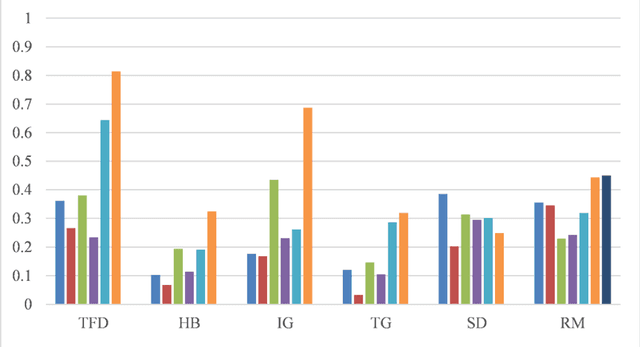Sharmila Upadhyaya
Utilizing Large Language Models for Named Entity Recognition in Traditional Chinese Medicine against COVID-19 Literature: Comparative Study
Aug 24, 2024



Abstract:Objective: To explore and compare the performance of ChatGPT and other state-of-the-art LLMs on domain-specific NER tasks covering different entity types and domains in TCM against COVID-19 literature. Methods: We established a dataset of 389 articles on TCM against COVID-19, and manually annotated 48 of them with 6 types of entities belonging to 3 domains as the ground truth, against which the NER performance of LLMs can be assessed. We then performed NER tasks for the 6 entity types using ChatGPT (GPT-3.5 and GPT-4) and 4 state-of-the-art BERT-based question-answering (QA) models (RoBERTa, MiniLM, PubMedBERT and SciBERT) without prior training on the specific task. A domain fine-tuned model (GSAP-NER) was also applied for a comprehensive comparison. Results: The overall performance of LLMs varied significantly in exact match and fuzzy match. In the fuzzy match, ChatGPT surpassed BERT-based QA models in 5 out of 6 tasks, while in exact match, BERT-based QA models outperformed ChatGPT in 5 out of 6 tasks but with a smaller F-1 difference. GPT-4 showed a significant advantage over other models in fuzzy match, especially on the entity type of TCM formula and the Chinese patent drug (TFD) and ingredient (IG). Although GPT-4 outperformed BERT-based models on entity type of herb, target, and research method, none of the F-1 scores exceeded 0.5. GSAP-NER, outperformed GPT-4 in terms of F-1 by a slight margin on RM. ChatGPT achieved considerably higher recalls than precisions, particularly in the fuzzy match. Conclusions: The NER performance of LLMs is highly dependent on the entity type, and their performance varies across application scenarios. ChatGPT could be a good choice for scenarios where high recall is favored. However, for knowledge acquisition in rigorous scenarios, neither ChatGPT nor BERT-based QA models are off-the-shelf tools for professional practitioners.
Enhancing Software Related Information Extraction with Generative Language Models through Single-Choice Question Answering
Apr 08, 2024Abstract:This paper describes our participation in the Shared Task on Software Mentions Disambiguation (SOMD), with a focus on improving relation extraction in scholarly texts through Generative Language Models (GLMs) using single-choice question-answering. The methodology prioritises the use of in-context learning capabilities of GLMs to extract software-related entities and their descriptive attributes, such as distributive information. Our approach uses Retrieval-Augmented Generation (RAG) techniques and GLMs for Named Entity Recognition (NER) and Attributive NER to identify relationships between extracted software entities, providing a structured solution for analysing software citations in academic literature. The paper provides a detailed description of our approach, demonstrating how using GLMs in a single-choice QA paradigm can greatly enhance IE methodologies. Our participation in the SOMD shared task highlights the importance of precise software citation practices and showcases our system's ability to overcome the challenges of disambiguating and extracting relationships between software mentions. This sets the groundwork for future research and development in this field.
 Add to Chrome
Add to Chrome Add to Firefox
Add to Firefox Add to Edge
Add to Edge